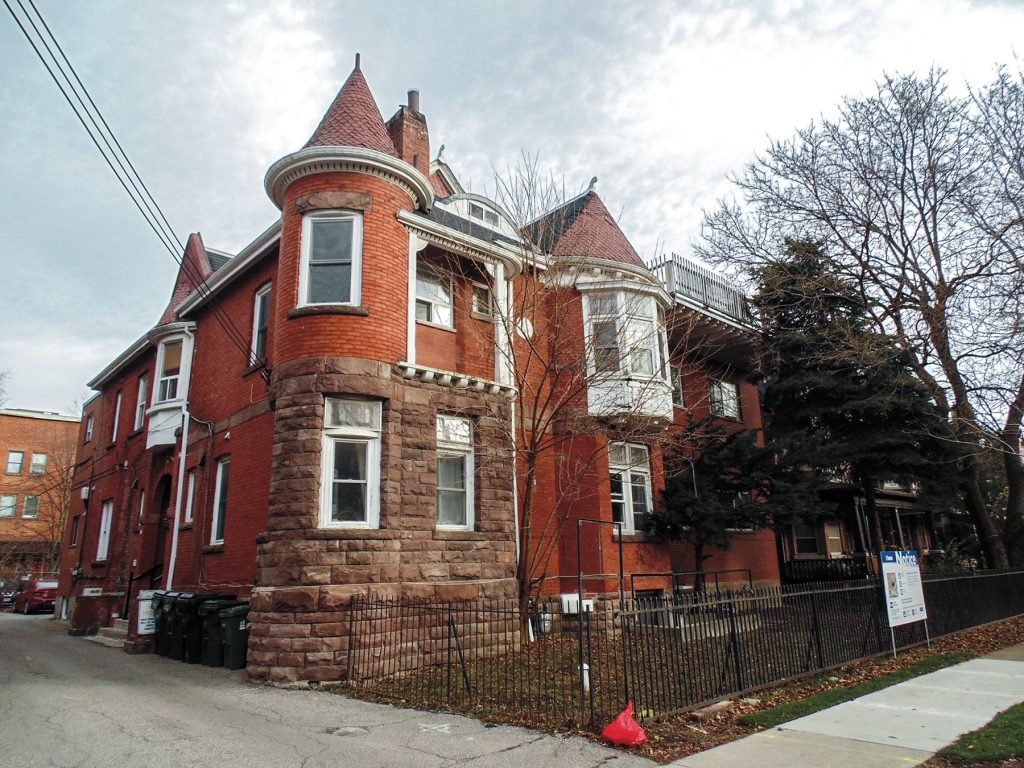Heritage building holds monumental significance

By Tanya Ielyseieva
Annex neighbours are fighting to stop the demolition of the properties at 661 and 663-665 Huron Street.
The plan to replace the single-family homes would see the construction of a four-storey apartment building with 48 residential units.
“The current developer met with the ARA Planning and Development committee where he heard that we were not against an infill project on the large property, but we were not supportive of the demolition of the buildings,” wrote Rita Bilerman, chair of the Annex Residents’ Association (ARA), in the letter to the Toronto Preservation Board. “We offered to show him other infill projects in the neighbourhood that maintained historic buildings that were part of historic streetscapes, but he expressed no interest in working with us to take that approach on Huron Street.”
In spring 2020, members of The Annex Residents’ Association and the British Home Children Advocacy & Research Association nominated the property at 661 Huron Street for a cultural heritage evaluation.
The properties, which are located on the east side of Huron Street just south of Dupont, were both built between 1890-1891 and were originally single-family dwellings. They are now used as multi-unit residential buildings.
According to the City of Toronto Directories for 1892 and 1893, the building at 661 Huron St. was one of the earliest to be constructed in the Annex, and the third completed on Huron Street between Dupont Street and Bernard Avenue.
661 Huron St. stands out not just because of its age and particular architectural style, it also happened to be a landing place for children known as “British-Canadian Home Children.”
Between 1863 and 1949, charities in the UK shipped 120,000 “orphaned” children to Canada from the United Kingdom to work at Canadian farms and households. Some of these children were as young as two years-old, and a majority of them were not actually orphans, but rather, the children of struggling and impoverished parents.
These children passed through receiving homes located in Toronto, and 661 Huron St. was one of them.
By April 1924, 661 Huron St. was occupied by a matron, associated with the Church of England’s “Waifs and Strays Society,” an organization now known in the UK as “The Children’s Society.”
Named Elizabeth Rye Home, this residence was used to train teenage girls prior to placing them in domestic service roles in the Toronto area. In the first year of the house’s operation, Elizabeth Rye Home trained 72 girls for employment.
“The building is a very substantial brick house in a desirable locality and has been adapted for its present purpose – well-furnished and comfortable as a residence for girls who from time to time may sojourn here,” stated a letter from the Juvenile Immigration Supervisor on July 1, 1924.
On January 15, 1932, the home was officially closed but it continued to house girls until 1933.
“Huron Street stands as a monument to the three-million descendants in Canada of the British Home Children,” wrote Lori Oschefski, CEO of British Home Children Canada in a letter to the Toronto and East York Community Council.
“To have this historic home destroyed by the wrecker’s ball is akin to destroying a part of Canadian history, of which too much has been lost already. On behalf of our over 7,000 thousand supporters, we ask that the heritage value of this home and its contribution to our nation be considered and the property saved and designated as a historically significant property in Toronto, as it should be.”
On September 30, October 1 and 2, 2020, City Council adopted the inclusion of 661, 663-665 Huron St. in the City of Toronto’s Heritage Register and its intention to designate the property V Part IV, Section 29 of the Ontario Heritage Act.
Now that the city is on board with the heritage concerns the advocates for preservation hope the developer amends its plans.
READ MORE:
- FOCUS: Apartment plan for Huron Street meets opposition (Apr. 2020)
